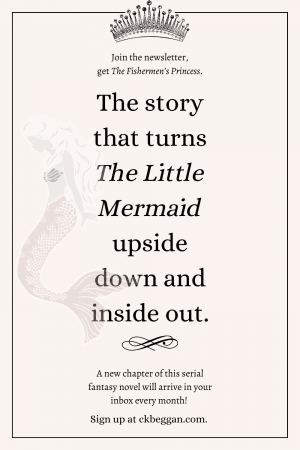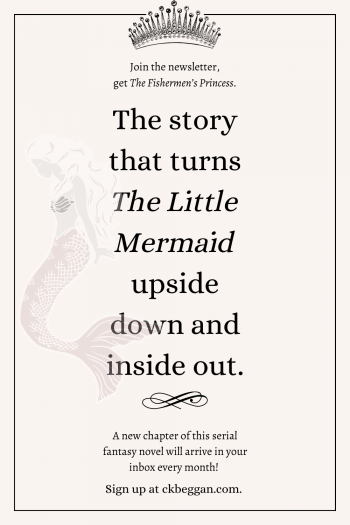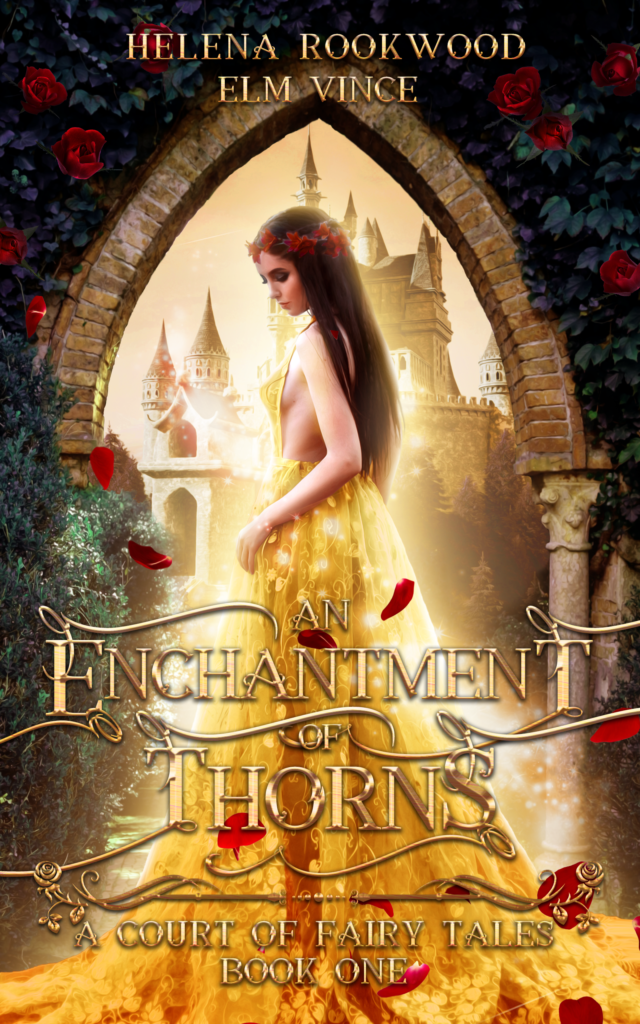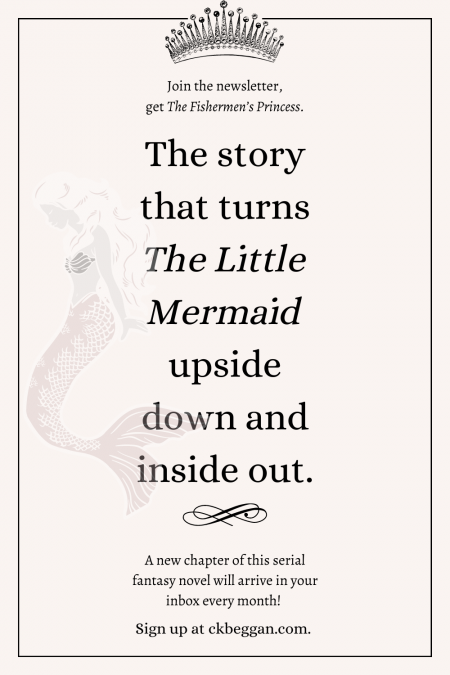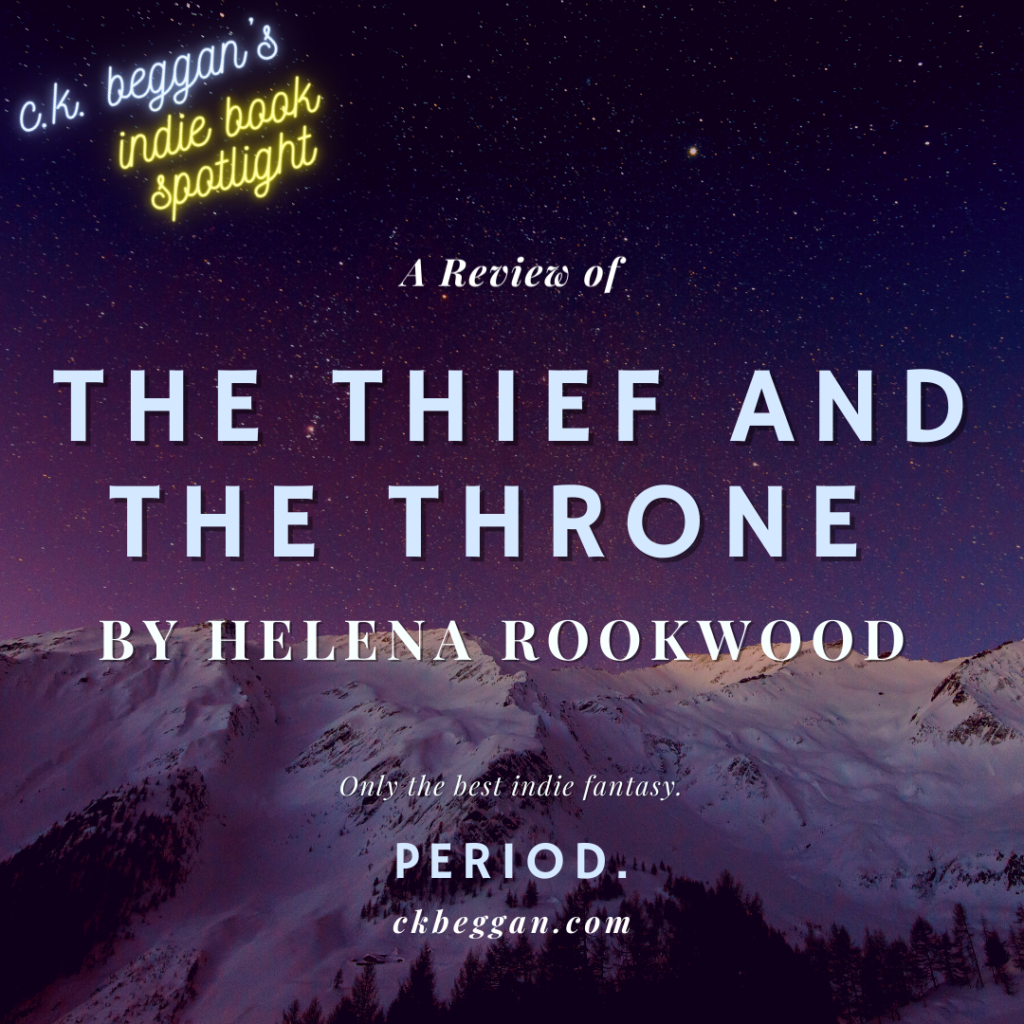Tag: book review
Review: Tempests and Slaughter (Pierce)

This is the story of how Numair, a beloved character in The Immortals series, became the (ahem; nerdy but a touch amorous) sorcerer we know and love. It’s the story you didn’t know you needed, with a quieter approach to a Hogwarts-like school and a simmering undercurrent of the disaster that is to come. It has a different tone than some of Tamora Pierce’s other YA novels, and I think it would be enjoyable for readers of fantasy as well as YA fans, and to newcomers to Pierce’s work.
Gladiators aside, this is not the violent story you’d expect from the name. The key word, in fact, is in the series name: The Numair Chronicles. There are animal gods, two kinds of magic, first love, dedicated friends, puberty and one prodigiously talented little boy who is about to grow up.
Origin story
Tempests and Slaughter tells the story of a young Numair (Arram Draper) and Ozorne, the “leftover prince” who will become the villain in The Immortals series.
Arram Draper has a Harry Potter-like knack for finding conspiracies and trouble. What he lacks that Harry excels at is the ability to fully pursue them. The future Numair is often told to stay out of it and keep quiet by his trusted teachers, who vow they’ll handle it. But the trouble and foreshadowing just keep coming. Sound frustrating? It is! But this also makes it realistic, interesting and very, very tense.
Arram’s first friend at a school for older mages-in-training is another prodigy: the “leftover prince,” Ozorne. There are peeks at a temper, but his bad side, including his biases, get written off due to his family’s tragic history. And after all, he’s just a boy mage. What’s the worst that could happen?
Tempests and Slaughter is full of slow-burn foreboding like that. It allows the reader to know better without begrudging the characters for not putting two plus two together; they can’t see the future, and the vast majority of the time, Ozorne is no different than any other good-natured but burdened kid. He’s is a protective, wonderful friend to Arram, like the perfect older brother for the vulnerable young mage.
Another perk of being friends with Ozorne is that Arram meets Varice, a sensible and increasingly elegant young woman whom Arram risks ruining their trio of happy friends over: he doesn’t know Varice for long before he has his first real crush. To Arram, the far more mature Varice seems unattainable, even as he takes on a slew of tasks meant for older teens or an adult.
This book left me eager to read more, ready to re-read The Immortals series and, sometimes, very annoyed. There is no satisfying wrap-up in sight: readers of The Immortals know more trouble is down the road, and nothing that happens in this series will change it. The future is literally already written.
But the looser structure of the story, flying through Arram’s years of training and many growth spurts, leaves room for a lot of action and milestones. Very little of the problems he comes across get resolved (or can be resolved) in one book.
This is a story that just keeps opening further and had to pause somewhere, which means I feel a little tortured between books. Fortunately, it’s a great thing to be tortured by Tamora Pierce’s characters, and I will absolutely have to read what happens next.
Tempests and Slaughter is a classic coming-of-age tale with a dark, magical twist. While Arram undergoes many rites of passage throughout the story, his status as a prodigy (and friendship with a river god) means he also takes on many roles suited for an older teen or adult.
Tempests and Slaughter is never overly violent and focuses mostly on relationships between the characters. Fans of fantasy in school settings will really take to this one. Fans of The Immortals series will be happily glued to it.
To learn more about this author, visit tamora-pierce.net.
Review: The Empress of Salt and Fortune (Vo)
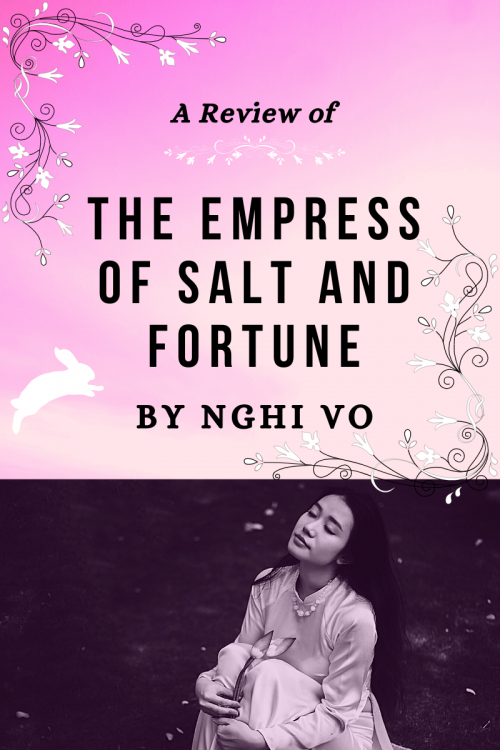
“The Empress of Salt and Fortune belongs to all her subjects, and she was romantic and terrible and glamorous and sometimes all three at once. There are dozens of plays written about her, and some are good enough that they may last a little while even after she is gone. Older women wear their hair in braided crowns like she did, and because garnets were her favorite gem, they are everywhere in the capital.
“In-yo belonged to Anh, but Thriving Fortune only belonged to us.”
– Rabbit, telling her story to Cleric Chih and Almost Brilliant
If you read any book this month, let it be The Empress of Salt and Fortune. It won’t take long. This beautifully written, surprisingly short book is as tidy as cleric Chih’s records, and as wonderful and heartbreaking as the story of the Empress of Salt and Fortune herself.
The writing leans toward prose (lovely, fast-moving prose), the ending is a bit abrupt, and I felt one of the key emotional moments in The Empress of Salt and Fortune was a bit too underplayed. Yet reading over the ending and some of my highlights, I feel that same heartache the story left me with all over again. I’m happy to overlook my grumblings about those things, and I think many other readers will be, too, precisely because of that writing and the emotional punch it carries.
“…You could also find a beauty in it, a kind of peace even in something that was at first so very unsettling. I’d cried the first time I saw the luminescence of the lake. Now most nights, I slept on the porch, bathed in its red glow. If it was a monster of some kind, it was a monster that watched over me, and, at the very least, it had not devoured me yet.”
– Rabbit, on Lake Scarlet
The Empress of Salt and Fortune is a story full of uncommon elements. The opening chapter is packed with world-building, without pausing to explain it; protagonist Chih is in a hurry, after all. Instead of grand battle scenes in this tale of revolution, there a plot twists. The title character appears only once as a ghost, treated reverently by other ghosts on a road, and Chih, who is at first mistaken for a girl by part-time narrator Rabbit, is a cleric from the abbey at Singing Hills and not a girl. In the world of The Empress of Salt and Fortune, clerics, who are charged with traveling the world to record its history and events and locations, are they and them.
Throughout the book, chapters often begin with Chih and Almost Brilliant’s inventory of the house at Lake Scarlet, the sarcastically named Thriving Fortune. This is part of Chih and their neixin companion’s work. “The abbey at Singing Hills would say that if a record cannot be perfect,” Chih tells Rabbit, the now-elderly servant she meets there, “it should at least be present. Better for it to exist than for it to be perfect and only in your mind.” Pride drives Chih on this detour to the newly declassified Lake Scarlet; she desires to be the first cleric to record Thriving Fortune’s details. “Welcome to your place in history, grandmother,” Chih tells Rabbit as the now-elderly woman begins her story.
And that story matters a lot, because of its famous former resident.
In-yo, the Empress of Salt and Fortune, and Rabbit meet in the capital, where Rabbit is a palace servant and In-yo has become the new wife of the emperor. As a northerner, from a country known for mammoths and being bullied by Anh, In-yo is ill at ease in the south, where mages keep winter at bay and mammoths can’t survive. She isn’t well-received, either. The ladies and servants of the court fear her at first, “because the women of the north were all thought to be witches and sorceresses. Then [the noble ladies] discovered her great secret, that she was only a heartbroken and lonely girl, and she became of no account at all.”
Though In-yo is exiled to Thriving Fortune after producing an heir, clearly she plays a long game. The beginnings of the revolution trickle into the story with details not even Rabbit, devoted to the Empress as she is, could make sense of at the time. In-yo is a complex character, seen only through the eyes of others but depicted sympathetically and unflinchingly by Rabbit. In The Empress of Salt and Fortune, revolution is told through relationships rather than battles.
There is more to Rabbit herself, too. “For a single faraway moment, she looked like something other than a simple servant woman, but it was there and gone so fast that Chih could not say for sure what it was.” Naturally, Rabbit is more entwined with history than anyone knows. She suffers for her association with In-yo, and without it, too.
Rabbit’s life with In-yo is also easier and less formal than at court. There are fewer risks, too, for many of the years they reside there. But later experiences that could have left her bitter and angry never affect the choices she makes, though they leave her feeling worn and older than her years. She’s an understated, constant and lovable presence in the story.
“She had a foreigner’s beauty, like a language we do not know how to read…her face was as flat as a dish and almost perfectly round. Pearl-faced, they call it where she came from, but piggish is what they called it here.” And “as far as In-yo was concerned, she had no equals in all the empire.”
– Rabbit on In-yo, the Empress of Salt and Fortune
Rabbit sums it up best, in one of her recollections, with one of the most quotable lines in the book (and there are quite a few): “One drunken evening, many years on, In-yo would say that the war was won by silenced and nameless women, and it would be hard to argue with her.” Alone at Thriving Fortune, having outlived the Empress and so many others but still carrying their secrets, Rabbit could easily have been one of those women without Chih’s arrival. It’s this sad reality that brings a quiet joy to Rabbit’s story of loss, revolution and betrayal.
The world-building of The Empress of Salt and Fortune is lightly sketched but creative. Rather than spend a lot of time on the details, key aspects are revealed in matter-of-fact conversation, from the glowing Lake Scarlet’s origin as the resting place of a dying star, to a carp that became a calico dragon, and the ghostly imperial palanquin that Chih encounters on the road to Thriving Fortune. There are hidden dangers from creatures we never quite see, and ghosts are omnipresent. It made me want to continue journeying with Cleric Chih and Almost Brilliant—and Vo’s beautiful writing—just to see more of it.
To learn more about this author, visit nghivo.com.
Review: An Enchantment of Thorns (Rookwood & Vince)
Today’s Indie Book Spotlight lands on a retelling of one of my very favorite tales…
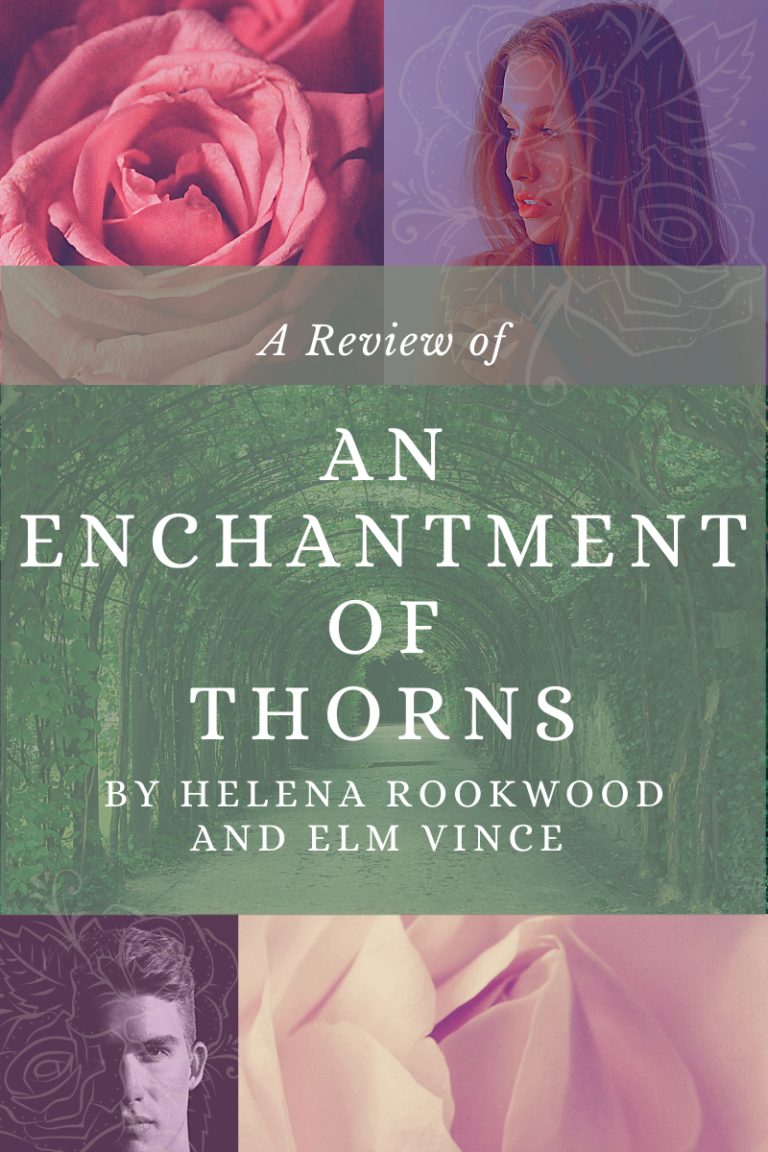
Note: I received a free advanced review copy in exchange for an honest review.
Holy mackerel! I love this book.
In all seriousness, this retelling of Beauty and the Beast was everything I could have asked for. For one thing, the magic has been upgraded more than a few levels. The royals of An Enchantment of Thorns are not just people born into the ruling class, but long-limbed, terrifying and impossibly graceful fae who belong to multiple courts throughout the land. But there’s more than one kind of fae in this world, and it’s hard to say which is more dangerous.
Narrator Aster is most familiar with the fae of the Folkwood, which surrounds her home in Rosehill. The Folkwood is a dangerous place, full of wicked tricksters (the small folk) and deadly ones, like the puca who’s been stalking Aster since the day it took her mentor, Sage. There’s also the beast, a fae creature seen once a year at the Tithe (more on the that in a minute).
Haunted by Sage’s death and burdened with replacing her as Rosehill’s only greenwitch, heroine Aster lives her life bottled up, geographically and emotionally. She’s as comfortable in a fight, thanks to her father’s training, as she is nurturing both plants and humans, often doing both in the same day. But she’s not as empowered as she seems. When the local farmers ignore her orders, or when servants in her wealthy half-sister’s household murmur each time Aster visits, there’s nothing Aster can do but suck it up. As her butt-kicking older sister Laurel puts it, Aster isn’t exactly living a complete life.
Roses with thorns
The characters in An Enchantment of Thorns are complex and unique. To break the curse, Aster must drop her prejudices against fae; after 99 years of cursed life, Throne must learn to let go of his. But are the fae to be trusted?
“To Rosehill, you have to be the calm and collected greenwitch who keeps her head in emergencies,” Laurel says, “but I know you, Aster…I know how much you feel.” Those emotions will be the key to Aster’s future and developing her particular human craft. They’re also what lands her at the beast’s Cursed Court, via the annual Tithe.
Once a year, every girl of a certain age must step onto a pathway that forms in the Folkwood. One girl will be chosen, and never seen again; the rest return shaken and almost unable to describe the terrible and beautiful fae lord they’ve just seen. If the people of Rosehill try to resist the Tithe—if even one girl fails to appear—the Folkwood closes in on all the girls, and no one survives. Yet the girls presented at the Tithe are meant to look “pretty and innocent,” with a requisite crown of flowers in their hair. As Aster describes it, “this was not a day for beauty. This was a day for iron and steeled nerves.”
When Aster’s silly half-sister Ava and her friends read one too many fairy tales and want to be chosen, Aster, who is also of age for the Tithe, must intervene. No surprise—though she appears ragged and wearing thorns instead of pretty blooms—the beast picks Aster instead.
It’s hard not to picture the temperamental Disney beast at times, but this one, who goes by Thorne, is more beast after the curse is broken than before (albeit with a really good head of hair). His house is more woodland than palace. Thorne has servants, of course, but they are lesser fae, and include the adorable Mosswhistle, a brownie Aster lures into her service after a few days of torment by the little folk.
And they do torment her: invisible at first, they leave out a beautiful dress full of pins, snatch the heat from a steaming bath the moment she sets foot in it, and never grow tired of laughing at and mocking her. There’s no “be our guest,” sung or stated, in An Enchantment of Thorns.
Aster is an interesting character who makes a great vehicle for the reader; she falls in love slowly and unexpectedly enough that it never feels forced. What makes her interesting is never forced, either: Aster is a young woman with many responsibilities and very few choices. She’s found her calling with plants, but her days aren’t exactly her own.
Aster is young, and lacks the respect Sage had though she must do the same work. Even supportive big sister Laurel, a fighter working for their smuggler father, doesn’t realize just how much there is to Aster. “The Beast should beware if he chooses you at the Tithe this week, what with your arsenal of plants,” she quips. (But also note: at least half of my highlights in this book were Laurel’s lines.)
It’s wonderful to see Astrid gradually become empowered. Best of all, she becomes empowered before she’s swept away by her heart. In this retelling, it isn’t all about falling in love to break a curse.
Dark fairytales
The dullahan makes a chilling appearance in An Enchantment of Thorns, along with barghests and too many pixies, brownies and goblins to count.
There’s so much depth to Thorne’s “beast” character, too, from his sarcasm, goading and irritatingly (for Aster) indirect encouragement, to the despair driving his weather-changing bad moods. He’s neither beastly nor overly handsome, like in some romantic fantasies. Says Aster, “His wild beauty was like a knife to the gut.”
Interestingly, Thorne also takes on the role of mentor. Unlike the selfish beast most of us know from Disney, Throne never appears truly uncaring. He doesn’t appear at her door the first night to try to force her to dinner; he only expects it as a courtesy to a seriously down-on-his-luck Court Fae, and because the other Tithe girls always managed it. He doesn’t forbid her food if she doesn’t eat with him, either. Moody, complicated, humane and ultimately lovable, he’s a beast any smart gal could fall in love with.
Fans of dark fantasy will feel at home reading An Enchantment of Thorns, thanks to the nightmarish curse and the monstrous fae in the Folkwood; there are some truly chilling settings and scenes thanks to both. Fantastical ones, too. But romantics will also love it. And if you’re like me, you will deeply regret not having the next book to read immediately after finishing it.
An Enchantment of Thorns is currently available for pre-order, and will be released on May 6, 2021. To learn more about these indie authors, visit their websites at helenarookwood.com and elmvince.com.
Review: Gods of Jade and Shadow (Moreno-Garcia)

Go on. Get your heart broken by this book. I dare you.
After finding the Mayan God of Death locked in her grandfather’s room, Casiopeia Tun embarks on a modern-ish (a hundred years ago) Odyssey-style quest to return Hun-Kame to power and thwart his usurping twin. Sounds like a romance, right?
Just wait.
Casiopea is not a willing participant in her adventure—although it’s fair to say she’s a dazed one. Trapped in a life of servitude to her harsh uncle and tyrannical (somewhat one-dimensional) cousin, she has dreams of driving a car, swimming in the sea and dancing like in the movies. Nowhere do her dreams include having the life slowly sucked out of her by Hun-Kame. And that’s exactly what will happen until she can help the deposed god reclaim the rest of his body.
Then again, life at home as a servant wasn’t that great, either. Family issues aside, her home region is also extremely religious. Now that she’s been seen leaving it with a man, her reputation is ruined. For Casiopeia, there can be no going home.
Fantasy without borders
Readers eager to read fantasy in non-european settings will be thrilled to delve into this Mexican mythology-based Adventure
With the promise of repayment and the whole thing just being over, Casiopeia bears it stoically even as Hun-Kame asks more and more of her (and her reputation is continually ruined). She flirts, she gets a flapper bob, she slides in amongst revelers in cities she only dreamed of seeing. It’s a wild ride, and she comes fairly close to taking it in stride even as a whole slew of mythological figures and creatures cross her path. Sometimes, though, it’s just too much. As strong as Casiopeia is, she has a vulnerable side and occasionally has to cry—as most of us would after meeting hungry ghosts.
Casiopeia is a dreamer, and though she always wanted more from life, what she really wants isn’t so unreasonable. All she’s ever hope for is to have control of her own fate. Though she’s finally away from home, her unwitting bargain with Hun-Kame means she has to face just how little control she has.
To put another wrench in the works, as Casiopeia begins to come into her own as a young woman, Hun-Kame becomes increasingly human. A theme of the hopefulness of the young—and a youthful romance—begins to take shape.
There isn’t much dawdling in the book, but I did feel as though I’d been on a long journey by the time it was through. For all its somewhat glib adventures, it’s an emotional story, and readers run the gamut alongside its young protagonist. The crisp prose and historical tidbits about each location on Casiopeia’s odyssey also added flavor. I very much enjoyed the writing, and often read the lightly snarky chapter openings aloud to family members, who were mostly willing. But as the story goes on, it becomes more character-driven, particularly as the end of the quest creeps into sight.
Of all the characters in the story, though, it’s Casiopeia and Loray, a demon she encounters, who feel the most real, which is perhaps why they find their way back to each other: they’re the only two who have the depth of character to continue on after so much change and loss. Casiopeia starts out young and hopeful; Loray, a little too wise about the ways of the world and literally trapped. For all Casiopeia stands to gain from her quest, she loses a lot, too—including her hope. It leaves the reader with the same sort of stunned emptiness Casiopeia feels at the end.
After going through so much with her, I wish there had been more to the ending than watching Casiopeia drive out of sight—even if she does seem to be in good company. For all he knows about human kind and the underworld, Loray is still full of a zest for life (and exploration), even if it’s all about simple pleasures. He also proves to be particularly kind.
Want more Mayan Mythology?
The Popol Vuh is filled with foundation myths and can be read for free on google.
The climax of the Gods of Jade and Shadow is heartbreaking, beautiful, and in all, makes it a gorgeous novel with a slightly abrupt ending that will still leave you thinking about it long after—and hurting for its characters. I did wish for a lot more out of the wrap-up section of the book, but was left with a lasting emotional impact from it, a sort of raw open ending that its main character is left with.
Then again, maybe that’s just a sign of good writing and a loveable character. It’s true that, just like Hun-Kame, I would’ve like to stay with Casiopeia a little longer.
To learn more about other titles by Silvia Moreno-Garcia, visit her blog.
Review: Children of Blood and Bone (Adeyemi)
Catching up on some reviews today as I finally add Children of Virtue and Vengeance to my very long TBR list. Which can only mean today’s review is of…!
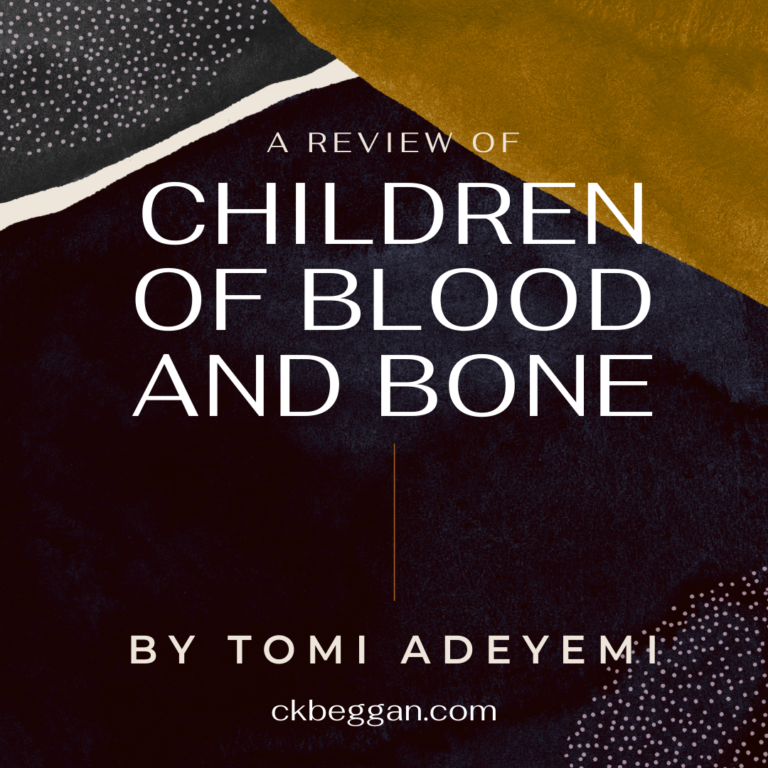
This is a new YA classic, with an inventive fantasy world and a real-world social message.
Children of Blood and Bone is rooted in the culture and religion of the Yoruba people, and it’s beautiful. Adeyemi drops the readers into a compelling fantasy world we’ve all been waiting for, even if we didn’t know it yet. Giant animals to ride on, a stunning pantheon of gods and goddesses, coming-of-age, bigotry (external and internalized), duty, injustice, selflessness and young love are woven into this magical story.
The world of Children of Blood and Bone is cruel to some. Even a girl as strong-willed as Zélie is driven out of her village by bloodshed and tragedy; at the same time, Amari, a princess with about zero self-confidence, makes her way out of the palace, while her heir-to-the-throne brother Inan joins the ranks of the very people responsible for what happens to Zélie’s village (one could say he’s a zealot, or naïve, or both). A collision course is in order.
Zélie is beset by grief and hopelessness at times, which adds to the depth of her story and her own drive. As a Diviner, she is connected to the goddess of death, and holds on just when her faith is about to desert her. She beats impossible odds, but not without strife and cost to herself.
Legend of Zélie: Zélie’s story is the most moving and most riveting of the perspectives. This determined heroine goes from grief and hopelessness to hope, love and sacrifice during her journey.
My only complaint was that I wanted to stay with Zélie and her companions rather than see what other characters were doing (which is really a testament to how much more exciting Zélie’s story is). It also means I kept reading to get back to her. There were scenes in which Zélie’s awe transmitted perfectly, like when she sees an image of the goddess of death, which gave me actual goosebumps. Adeyemi has a real talent for transferring her characters emotions from page to reader.
In short, I shed tears. I stayed up way too late reading. There was a touch of romance and a big helping of heartbreak. This was a true “experience” novel, and it was gorgeous. It’s also a prime example of the right way to *ahem* kill off a character.
The feeling I had reading this book has stayed with me long after the details began to blur (and admittedly they have blurred a bit). But for me, the best books will always be the ones that make you remember the feeling of reading them, if not all the names and details. Fans of Garth Nix’s Abhorsen/The Old Kingdom series and Silvia Moreno-Garcia’s Gods of Jade and Shadow are likely to enjoy it as much as I did.
So while this book was probably checked off your own TBR list long ago, I won’t risk somebody out there missing it. Read Children of Blood and Bone if you still haven’t! You won’t be sorry.
Note: Book 2 in the Legacy of Orïsha series, Children of Virtue and Vengeance, was released in 2019; as of posting, there was no release date or title listed on Goodreads for #3.
Indie Book Spotlight: The Thief and the Throne (Rookwood)
{Note: I received an advanced copy in exchange for an honest review.)
Lira Potion-maker is back…minus her talent with potions. In fact, the ex-circus girl can’t even read a decent fortune these days.
The second book of Helena Rookwood’s imaginative Carnival of Fae series finds Lira fleeing with the perennially handsome and irritating Kit, whose true motivations are unknown. The reception they’ll receive at their timely winter destination? Also unknown. The reason Lira can use fae artifacts she’s never seen before? You guessed it: unknown. The only thing Lira does know is that the eyes of the Fae gods are upon her, and that ain’t good.
Lira is easily one of the best female main characters in fantasy. She’s strong without being a fighter, a fantasy character who does not lose herself to fantasy; if her heart beats a little faster at the sight—or touch—of a handsome young man, she is back to being an ever practical and self-serving survivor a moment later. She lies, cheats, and ignores advice in favor of what she (very impatiently) would rather happen. She also has no interest in the lives of the wealthy and powerful—just the sort of people she finds herself surrounded with these days.
Fae artifacts cause serious trouble in The Thief and the Throne, especially for Lira, who can use them without training–and like everyone else, she has no idea why.
All of this is a bold choice by author Rookwood (really, when was that last time you read a heroine who lies that frequently and isn’t a spy or something?). But Lira is never unlikable, even if her actions make the reader cringe from time to time. That’s because no matter what happens (and a whole lot does, in this book), Lira is always true to herself. Her well-developed character allows her to make mistakes and still be a MC worth following. In fact, it often makes her story more exciting.
The Thief and the Throne has a smaller scope than the dazzlingly magical The Prince and the Poisoner. Lira’s choices, once a focal point of the series, have dwindled, leaving the story with a higher ratio of action to intrigue. The Thief and the Throne derives a lot of its tension from character development, too. You can never really be sure who will end up helping Lira, or who will do worse than the opposite.
One development is the labeled slow-burn romance. It comes in the form of a very pleasant Mr. Darcy-esque twist, one we’ll have to wait for the sequel to see more of. I won’t say who the potential love interest is, but in the world of Carnival of Fae, nothing is for sure.
There are some genuinely cool moments in The Thief and the Throne, interesting twists and a persistently wonderful (if more sinister) magical world. This is an enjoyable and exciting read, and the perfect follow-up to The Prince and the Poisoner. You’ll never think of the smell of caramel (burnt or otherwise) the same way again.
Review: A Song Below Water (Morrow)

I adored this book and the beautiful relationship between its two narrators, Tavia and Effie.
The story lines in A Song Below Water feel timely, but would have fit decades ago, too (with one exception: this YA fantasy is anchored to the present by Tavia’s devotion to a fictional YouTube star). Its themes are comprehensive: activism, fear rooted in bigotry (through mythos), racism, sexism, the drive a parent feels to keep a child safe from that discrimination and, rising above them all, friendship and found family.
Tavia’s voice is power—literally, when she uses her siren voice. But being a siren is dangerous, tied into the fact that only black women and girls have been sirens in recent times. Tavia’s throat burns when she suppresses her voice, but—according to her father—being outed as a siren is the worst thing that could happen. She’s worn down by a life spent wading through society’s fears, her father’s and her own.
A Song Below Water‘s other protagonist, Effie, is the antidote for all that, even if she can’t take it away. They aren’t really sisters, but now that they live together they might as well be. Oh, and she’s a mermaid. Not in real life, but she plays one at the Renaissance faire she loves. Effie’s love for it goes back to her mother, who was a performer, too, and since her mother’s death, it’s how she holds on.
She might not be a real mermaid, but it’s clear Effie is something. As the girls negotiate a sometimes cruel and frequently, dangerously misunderstanding world (same goes for their high school), their bond of sisterhood guides them through and propels the story line. That and the mysterious gargoyle that roosts on Tavia’s roof.
This is a great story, well told, and more. A Song Below Water is chuck full of lessons in empathy for non-black readers. Morrow does some of her best work in Tavia’s narration. “I’m not up for educating anyone on how many things exist that they don’t know about or support, even if we are basically friends,” says Tavia, too worn to explain when she’s questioned about why she watches hair videos on YouTube. And, later, “the only ones who seem to stand for Black girls are Black girls.”
The popular girls have magic to boost their charm, but Tavia and Effie have it all on their own. They read like real girls.
As A Song Below Water progresses, Tav moves ever closer to activism, and gets a big jolt forward when another young woman reveals herself as a siren. It gives Tavia more than one reason to join in, and more than one reason to be afraid. Yet, at the protest, she says, “I feel honest here. I feel like a battery being recharged. Like an orphan coming home.”
A Song Below Water is wonderfully crafted, too. The mystery of Effie’s identity—and that of her father—kept me turning pages late into the night (even when I guessed part of the answer). I had to know what happened to these fully realized characters. The story might be wrapped up a little quickly and neatly, but it’s not without heartache. For some of the characters, it will never be neat enough.
And one other thing: these are real girls on the page. (I can’t speak to whether their slang is accurate, but it did make me feel old, so there’s that.) It was refreshing. Tavia and Effie’s stories are crammed full of the ache of facing the world (and boys, and parents) as young adults. Their emotions and fears feel real and unforced, and their characters are never diminished just because they do something girly. They’re competent, confident, and capable of independently navigating the world, even if all the supernatural happenings are overwhelming them. They cry without looking like crybabies, without ever seeming weak.
Yes, they also care about their hair and poor Effie’s skin, but they aren’t made to look vapid or silly while doing it. They’re two teenagers taking charge, trying to figure out how to grow up and how to write the manuals for their lives, the way we all have to. Effie gets self-conscious. Tav braves the minefield of popular elokos who have it all. She also worries about whether she will be allowed to grow up because of who she is.
The romance angles are never soapy or sappy, only authentically awkward and sweet (or heartbreaking. In both cases, it doesn’t consume either girl’s life). Its characters could easily walk off the page, but it’s the bittersweet nature of A Song Below Water that makes its plot feel true. In that way, this is not just timely but a timeless story, with a universal message you don’t need to be young to remember:
True friendship is rare, and growing up, no matter who you are (or because of who you are), is no small feat.
Indie Book Spotlight: Sting Magic (Wilson)
It’s time for another Indie Book Spotlight!
Note: I received a free advanced reader copy of this book in exchange for an honest review.
Sting Magic, the first book in the new Empire of War and Wings series by prolific author Sarah K.L. Wilson, is a typo-dotted triumph. There are three reasons for that: world-building, a unique magic system, and the fact that it is never boring.
Main character Aella lives in a wild colony, the Far Stones, where residents have freedom and hardships alike. They’re poor and backwards by Imperial standards, but most of their time is spent farming in a land that likes to turn upside down and murder them—the Forbidding, a strange, viney magic that corrupts trees and bears and whatever else it can find. Aella’s family is her everything.
And then the heir to the Empire shows up.
That’s when Aella finds out that she has the same winged, creative twist on familiars-style magic as the Empire’s most celebrated warriors. It’s a dream and a nightmare for her. Except, instead of having birds like literally everyone, Aella hatches golden, magical bees. Heresy!
Aella is forced to leave her family to become property of the ruthless Le Majest, Juste Montpetit. In the course of a few hours she loses everything, with only the warm glow of her cute and happy bee familiars to comfort her. Aella has a litany of horrors to face as she travels through a perilous land alongside violent Imperials, and more than few mysteries to solve as she tries to save her family and weighs joining the rebels.
Familiar magic: Readers will love to hate Sting Magic‘s ruthless villain and adore Aella’s bees.
Sting Magic is a shorter novel that moves at a brisk pace. The cozy but disgruntled domestic scenes at the beginning are the closest it ever gets to slow, plus the “let me barge in and spend a long time asserting my authority even though I clearly have other houses to get to” encounter with the cruel prince that immediately follows it. The latter scene could have been more concise and still left the reader wanting to punch Juste Montpetit if given the chance. He’s pure villain, but it works.
An early exchange with Ospey also feels a touch long, and there’s a bit of bouncing around the timeline here and there that can be confusing. But the high stakes for the main character, combined with the mysteries of her magical and dangerous homeland, keep things moving.
That being said, Sting Magic wasn’t fully my cup of tea. One of its biggest weaknesses is its main character, not a weak female MC at all but a broadly sketched one. Aella is more reactive than anything, and replies angrily to her captors when I would’ve expected a brooding, calculating silence, given her goals. She’s a contradiction that way, flying off the handle despite repeatedly being told she could endanger her family, the absolute last thing she wants. She doesn’t read like a person with a hot temper, either.
I was relieved when Aella finally did something proactive toward her goal, and it filled in some of her missing personality. Still, I left the book with only a weak sense of who she is. (I hope Aella will be fleshed out more in the rest of the series.)
One of the reasons Aella’s weak personality stands out so much is because the other characters are so well-rendered: the irredeemably villainous prince, Juste Montpetit; the snooty society gal who just might be a friend, Zayana; the mentor with the huge personality, Ivo; and Osprey, the toothpick-gnawing would-be ally she can’t fully trust. They are never described extensively (Osprey gets a little extra detail so you’ll know he’s handsome), but the things these characters say and do gave me a clear picture of them and their personalities.
The magic system and world-building of Sting Magic are, of course, superb. I wished the writing was a bit more polished (those typos and repetitive phrases!), but the interesting world Wilson created kept me turning pages.
This is a quick read I recommend picking up, in which you can despise the villain, root for the heroine to accomplish her goals (“Be relentless.”), and lose yourself if an intriguing and dangerous world of fabulous magic.
Indie Book Spotlight: Snowblind (Velfman)
At long last! A fantasy about a character with chronic illness, whose affliction isn’t treated like something to be overcome and isn’t there to inspire anyone.
Lanna is a Southerner, born in a cold, harsh land full of rules. She also suffers from seizures. In a place where survival is anything but a guarantee, she’ll never be considered a full adult. It’s one of many reasons we first meet Lanna and her equally tough-as-nails family on the road to the more plentiful Empire.
Look at an Amazon preview (I’m not affiliated), and you’ll instantly know that Snowblind is exquisitely written. The details and descriptions are never rushed but don’t hinder the story flow, either. Those careful descriptions create an immersive world I felt I could walk around in.
In fact, Velfman does twice the world-building by creating two very different settings. The outer village Lanna first resides in, falls in love in (also perfectly rendered; she makes him work for it), and the Imperial capital (the hall that houses the concubines is its own world, with its own flower language) are like characters themselves. And all the characters in Snowblind are well-developed.
Lanna is a sort of goldilocks female MC. She has a heart, and it is available to her suitor, if he can earn it. But she also can give an ox a run for its money with her work ethic and strength. She is practical, savvy, and never silly, even in the thrall of a romantic storyline with Pride and Prejudice qualities (though, thanks to Lanna’s culture, it’s not as restrictive or chaste).
Unfortunately, Snowblind did need more copy-editing. There are more typos than in W.R. Gingell’s Spindle (also loved and reviewed here), but it does surpass those issues and continue to be an amazing, well-written story. There is also a chapter or two that made me squeamish, in which a slave sings the praises of the Empire’s supposedly benevolent form of slavery to Lanna, who is horrified. I would have preferred it be called something else, since it isn’t slavery at all. She is told slaves can leave whenever they like.
All that is a part of a this is the Empire and what you learned in the South is totally backwards theme, but it was too close to real-life revisionist history for me. It’s thankfully brief. Lanna also curses a gay character who drugs her by calling him a pervert and corrupter of men, though before and (eventually) after this they are friends. These are very small episodes in the book, but as I am recommending Snowblind I wanted to share this for full disclosure.
Another remarkable thing about this book is how well the tension and intrigue was layered (the complex characters play no small part in this). Lanna is ripped from everything and everyone she knows and loves, and has no choice in the matter. We always know what’s in her heart. The people who surround her are sometimes kind, sometimes not, and there are always hints at a deeper agenda.
A lovely, Pride and Prejudice-esque romance, Machiavellian characters, great world-building, court intrigue and a fine representation of the chronically ill: a lot of good things are packed into this debut fantasy.
An antagonist in the capital is the only character with overt goals, and she tries to thwart, disgrace and generally ruin Lanna without qualm. But the others aren’t so easily pinned. In Snowblind, the real “villains” are more ambiguous, and a heck of a lot better at concealing it. These are no mustache-twirling bad guys tying maidens to a railroad track. They might manipulate the maiden, though, or toss her aside if she gets in the way of their true aim. They’re a lot more Machiavelli than, say, Voldemort.
Amidst all this is the repeated interruption of Lanna’s seizures, the thing that has always kept her from the life she wants. The powerlessness of chronic illness is captured so well and so sensitively that I could’ve cried. “All her life there had been a wall,” the book says of Lanna. “Her sickness had been a barrier to so much. Angry at her own mind for being defective she clutched her head, and something in her snapped…Then the tears came: hot, regretful and bitter.”
As people who (possibly) mean well make her illness worse, as it changes and complicates her life and keeps her from her simplest, most essential needs (love, family, productivity and the ability to choose where she will go), this book spoke to me. This is the kind of representation I’ve been waiting for. I hoped it would be what it looked like in Snowblind’s description, and I wasn’t disappointed.
Flaws and all, this is a wonderfully written book, and I very much look forward to snatching up the rest of Lanna’s story.
Want to know when the next review will be out?






